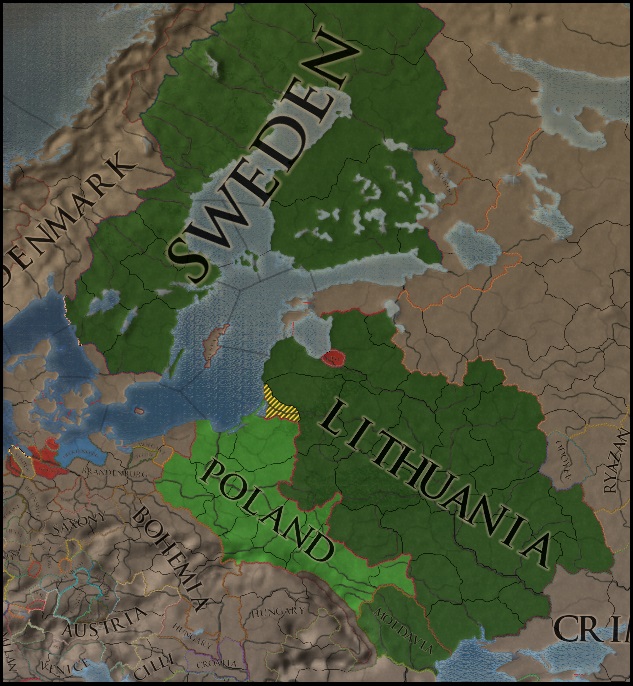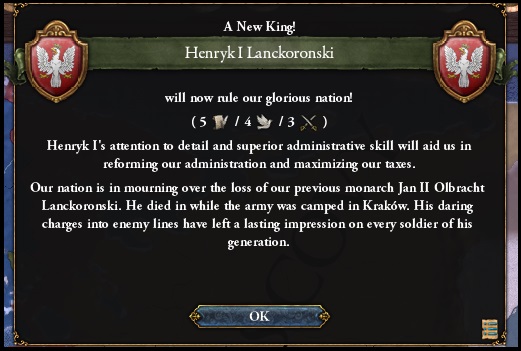
Poland and her neighbours in 1444.
Introduction
Modern Poland was born at the very end of the Tenth Century when the pagan chieftain Mieszko I converted to Christianity. The clever and determined ruler became the first Duke of Poland, forging a strong Christian state in Eastern Europe with the help of his wife Dobrawa, daughter of the Duke of Bohemia. Their son Bolesław the Brave became the first King of Poland.
For four hundred years the Polish-Bohemian Piast Dynasty ruled Poland through periods of prosperity and near disaster. In the early Eleventh Century the kingdom nearly collapsed under Mieszko II and it would not be until decades later that Bolesław II restored the power of the crown, only to lose it almost at once to the votality of his barons. The next two centuries saw division and turmoil. That came to an end with Kazimierz III or Casimir the Great, the last of the Piasts to rule as a hereditary monarch who refounded Poland as a great and stable realm. His nephew and successor, Louis the Hungarian was already ruler of Hungry and Croatia when he took the Polish throne in 1370. Like his uncle before him Louis had only daughters and in order to see one of his daughter Mary or Jadwiga inherit he was prepared to recognise the privileges of his boisterous nobles with the Privilege of Koszyce.
Louis's efforts could not prevent civil war erupting over the succession after his death in 1382 and it was only after bloodshed and destruction that Jadwiga took the throne as 'King of Poland'. Jadwiga would die young but she did marry the newly Christianised Grand Duke of Lithuania Jogaila and it would be his children that would eventually take the Polish crown.Through all this strife Poland had remained stubbornly independent and distinct, her aristocrats the proudest in Europe, her cities large and wealthy and her armies formidable.
It was just one such army that the Jogalia's son Władysław, then King of Poland led on crusade against the Ottoman Turks in 1444. It would be on the crusade that he would meet his nemesis and Poland be once again cast into uncertainty...

The Battle of Varna, 10 November 1444.
- 2
- 1


.jpg)


































































.jpg)




















































